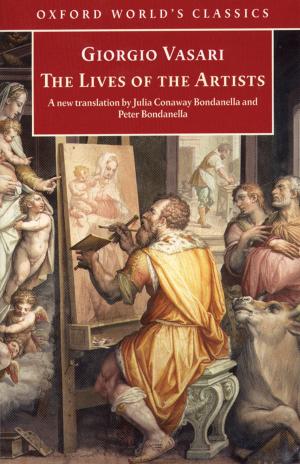The Figaro Trilogy: The Barber of Seville, The Marriage of Figaro, The Guilty Mother
The Barber of Seville, The Marriage of Figaro, The Guilty Mother
Fiction & Literature, Drama, Nonfiction, Entertainment, Literary Theory & Criticism| Author: | Pierre-Augustin Caron de Beaumarchais | ISBN: | 9780191604560 |
| Publisher: | Oxford University Press, UK | Publication: | October 9, 2003 |
| Imprint: | OUP Oxford | Language: | English |
| Author: | Pierre-Augustin Caron de Beaumarchais |
| ISBN: | 9780191604560 |
| Publisher: | Oxford University Press, UK |
| Publication: | October 9, 2003 |
| Imprint: | OUP Oxford |
| Language: | English |
The Barber of Seville, The Marriage of Figaro and The Guilty Mother were the first plays to use a set of recurring characters who develop over time. They chronicle the slide of the ancien regime into revolution and Figaro was seen as a threat to the establishment. The impertinent, bustling servant was appropriated by Mozart and Rossini for their own purposes, and Beaumarchais became eighteenth-century France's only truly international theatre star. - ;The Barber of Seville * The Marriage of Figaro * The Guilty Mother Eighteenth-century France produced only one truly international theatre star, Beaumarchais, and only one name, Figaro, to put with Don Quixote or D'Artagnan in the ranks of popular myth. But who was Figaro? Not the impertinent valet of the operas of Mozart or Rossini, but both the spirit of resistance to oppression and a bourgeois individualist like his creator. The three plays in which he plots and schemes chronicle the slide of the ancien r--eacute--;gime into revolution but also chart the growth of Beaumarchais' humanitarianism. They are also exuberant theatrical entertainments, masterpieces of skill, invention, and social satire which helped shape the direction of French theatre for a hundred years. This lively new translation catches all the zest and energy of the most famous valet in French literature.Beaumarchais[title should link to the catalogue entry][insert cover image 2804138] -
The Barber of Seville, The Marriage of Figaro and The Guilty Mother were the first plays to use a set of recurring characters who develop over time. They chronicle the slide of the ancien regime into revolution and Figaro was seen as a threat to the establishment. The impertinent, bustling servant was appropriated by Mozart and Rossini for their own purposes, and Beaumarchais became eighteenth-century France's only truly international theatre star. - ;The Barber of Seville * The Marriage of Figaro * The Guilty Mother Eighteenth-century France produced only one truly international theatre star, Beaumarchais, and only one name, Figaro, to put with Don Quixote or D'Artagnan in the ranks of popular myth. But who was Figaro? Not the impertinent valet of the operas of Mozart or Rossini, but both the spirit of resistance to oppression and a bourgeois individualist like his creator. The three plays in which he plots and schemes chronicle the slide of the ancien r--eacute--;gime into revolution but also chart the growth of Beaumarchais' humanitarianism. They are also exuberant theatrical entertainments, masterpieces of skill, invention, and social satire which helped shape the direction of French theatre for a hundred years. This lively new translation catches all the zest and energy of the most famous valet in French literature.Beaumarchais[title should link to the catalogue entry][insert cover image 2804138] -















